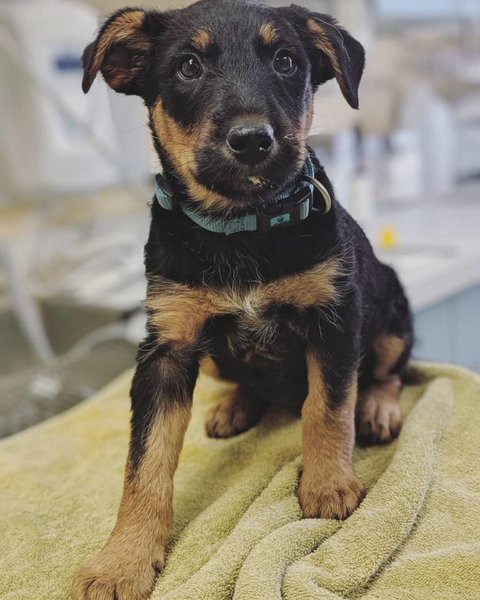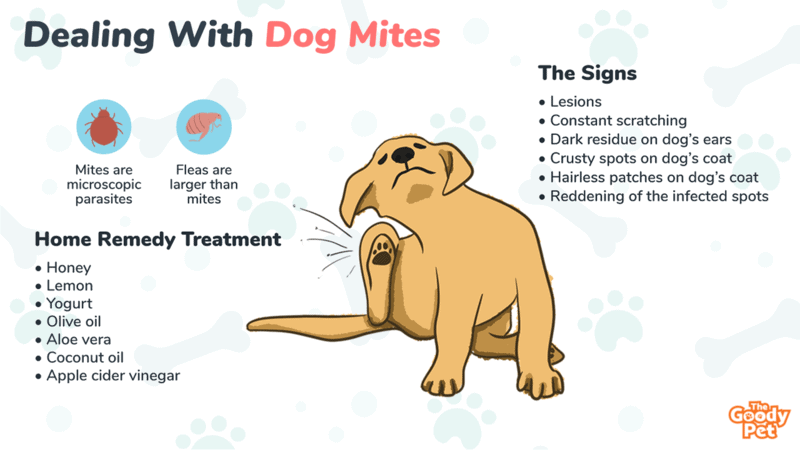Dog mites are tiny parasites that cause lots of discomfort for your dog. They can also cause various skin conditions, including hair loss and dry skin. As a dog owner, it’s therefore important that you know how to treat your dog for mites. So, what can you do about them?
There are several ways of dealing with dog mites. You can treat your dog for mites using medications, using chemicals and shampoos that are manufactured for that particular purpose, or using home remedies like coconut oil, and apple cider vinegar.
If your canine buddy has a mite infestation, this guide will take you through all the options you have for dealing with the infestation. We’ll also take a look at other causes of concern if your dog has mites, including whether it is possible for you or members of your family to get mites from your dog.
Before diving into all that, however, let’s take a look at the most important thing – how to tell that your dog is infested with mites.
What Does It Look Like If A Dog Has Mites?
The easiest way to tell if your dog has mites is to closely examine their skin. Your dog’s behavior can also give you clues as to whether they have mites.
Some of the signs of a mite infestation include:
- Constant scratching
- Reddening of the infected spots
- Hairless patches on your dog’s coat
- Crusty spots on your dog’s coat
- Lesions
- Dark residue on your dog’s ears, caused by ear mites
Sometimes, it is even possible to see mites if you examine your dog’s skin closely. A mite infestation on a dog looks like white flakes of dandruff. However, the “dandruff” will sometimes have some movements, which is why mites are sometimes referred to as walking dandruff.
How Do You Tell If Your Dog Has Fleas Or Mites?
Both mites and fleas usually cause itching and scratching, and therefore, you can easily become confused as to whether your dog has fleas or mites.
Fleas are much larger than mites and can be easily seen with the naked eye. You can also tell whether your dog has fleas by looking for “flea dirt” – dark flecks of flea droppings – on your dog’s coat.
If your dog is itchy but has no fleas, then you’re most likely dealing with a case of mites. To be absolutely certain what is troubling your pooch, you can take them to the vet for an examination. Your vet will examine your dog’s fur or skin under a microscope and confirm whether your dog has mites.

How Do You Get Rid Of Mites On A Dog?
While mites can be troublesome, you have several options when it comes to getting rid of mites on your dog. One of the best things you can use to kill mites is anti-parasitic shampoos.
Other easily-available substances you can use to kill mites include:
- Frontline plus
- Dawn dish soap
- Baking soda
- Hydrogen peroxide
- Rubbing alcohol
In the next sections of this guide, we are going to look at how to use these easily available chemicals to get rid of mites from your dog, as well as how effective they are at treating dogs with a mite infestation.
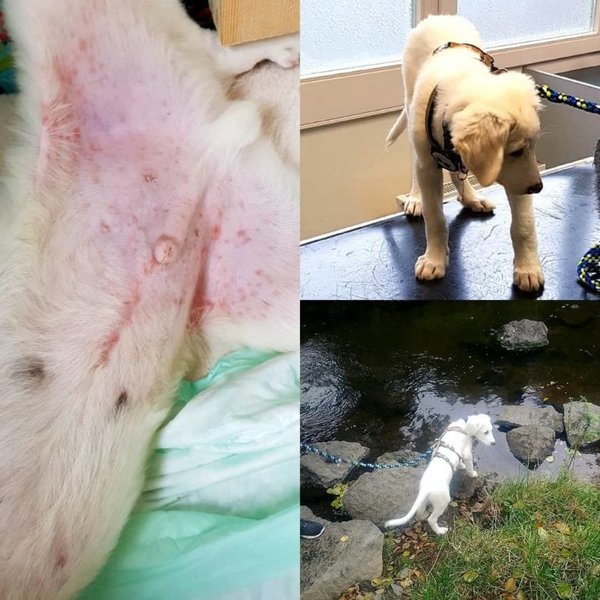
What Shampoo Kills Mites On Dogs?
You should go for dog shampoos that are specially formulated to treat dogs with mites, rather than any anti-parasitic shampoo you happen to come across.
While there are many anti-parasitic shampoos that you can buy from your local pet store, not all of them are effective in getting rid of mites. Even shampoos that are meant to act on fleas and ticks will not necessarily work on mites.
Shampoos that are best for treating dogs with mites are those that contain sulfur. Sulfur is a very effective mite killer. Most shampoos formulated for mites also have ingredients that help soothe the itchiness and irritation caused by the mites.
Based on our tests and experience, the best shampoo for killing mites on dogs is Veterinary Formula Clinical Care Antiparasitic & Antiseborrheic Medicated Dog Shampoo. There are several things we love about this shampoo.
First, it contains micronized sulfur, which we have already seen is very effective when it comes to killing dog mites. Second, this shampoo is fast acting and will get rid of the mite infestation within a couple of days.
The shampoo also contains Allantoin and Colloidal Oatmeal, which will help hydrate the dry skin caused by the mites and allow your doggie to heal faster. The shampoo is also very effective at relieving the inflammation and itchiness caused by mites.
Does Frontline Plus For Dogs Kill Mites?
Frontline Plus is a topical medication that was originally made for treating dogs infected with ticks and fleas. However, Frontline Plus has also been found to be very effective when it comes to controlling and treating mite infestations.
So, how does Frontline kill mites? Frontline Plus contains two active ingredients, Fipronil and S-methoprene. Fipronil works by attacking the mites’ nervous system. Fipronil is very effective and fast acting, and will start killing the mites on your dog within a matter of hours.
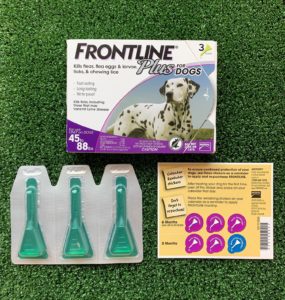
S-methoprene, on the other hand, works by inhibiting the mites’ ability to grow. This means that any mite eggs and larva on your dog’s skin will not grow into adults. This two-pronged approach makes Frontline Plus a very effective treatment for mites.
To use Frontline Plus to treat a dog with a mite infestation, remove your dog’s collar, separate the fur on the back of your dog’s neck to expose the skin, and then apply Frontline Plus directly on the skin.
You only need to apply Frontline Plus on one spot on your dog’s skin. The drug will translocate through the oil glands and spread all over your dog’s skin. Frontline Plus for dogs will also kill ear mites through translocation, so you don’t need to apply it directly on your dog’s ears.
The reason why Frontline Plus is applied behind the neck is to keep your dog from licking the medication. You should also avoid touching the medication after application, and make sure to thoroughly wash your hands after applying the medication.
After applying the medication, don’t bathe your dog or allow them to swim for 24 hours. The medication should only be applied once every 30 days.
Frontline Plus can be used on any dogs older than 8 weeks, and is also safe for use on pregnant and breast-feeding dogs.
Note, however, some dogs can have an allergic reaction to the medication, so you need to keenly observe your dog after applying Frontline Plus. This way, you’ll quickly notice any signs of an allergic reaction.
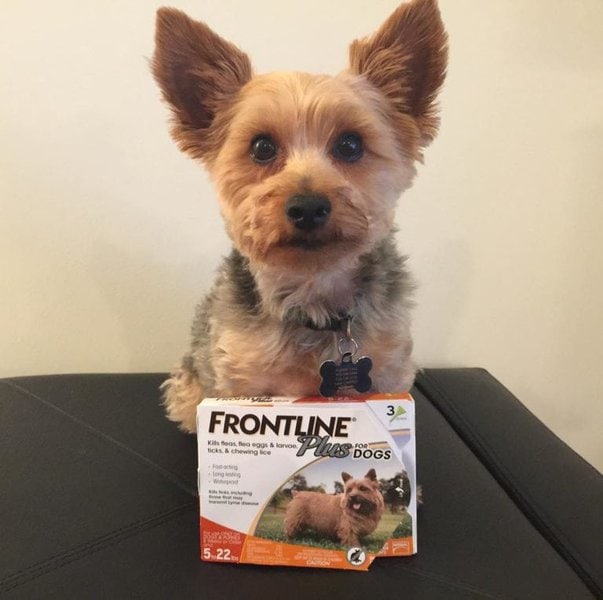
Does Dawn Dish Soap Kill Mites On Dogs?
Dawn dish soap is another easily available solution that can be used to kill mites on dogs. Dawn dish soap kills mites by breaking down their exoskeleton.
To use Dawn dish soap to treat a dog with a mite infestation, prepare some bath water for your dog and add Dawn dish soap to it. Work up a lather and give your canine buddy a thorough wash, making sure their fur is properly lathered.
Allow the soap and lather to remain on your dog for about five minutes, and then rinse it off with clean warm water. Give your four-legged buddy such baths as frequent as needed, until the mite infestation is eliminated completely.
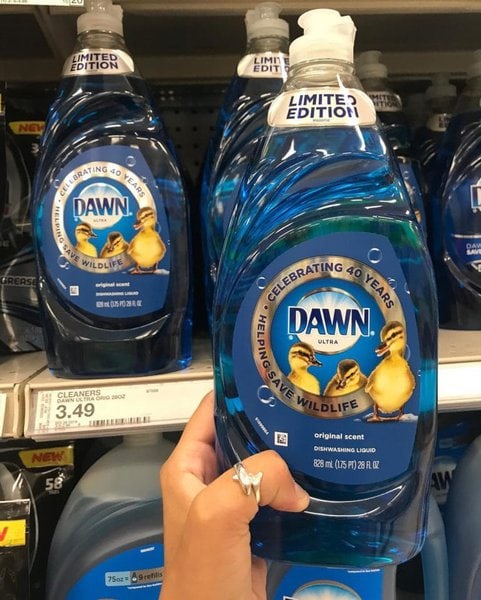
Does Baking Soda Kill Mites On Dogs?
Baking soda, an ingredient that is found in almost every kitchen, is also very effective for treating dogs with a mite infestation. When using baking soda to kill mites on dogs, you should be careful to ensure that your dog doesn’t ingest the baking soda. Ingesting large amounts of baking soda can be harmful to your dog.
There are two ways to use baking soda to get rid of dog mites. You can either give your pooch a dry bath or a wet bath.
For a dry bath, simply sprinkle the baking soda on your dog’s coat and rub it in to ensure it gets directly to the skin. Wait for several minutes and then brush out the baking soda (together with the dead mites).
For a wet bath, mix a few tablespoons of baking soda and dishwashing liquid with water, and put the mixture into a spray bottle. Spray the mixture on your Fido’s coat, wait for several minutes, and then wipe your dog dry. Alternatively, you can add baking soda to your dog’s bathwater while washing them.
If your canine buddy has ear mites, add some baking soda to a cup of warm water. Dip a cotton ball into the cup and use it to clean your dog’s ears. Doing this regularly will kill all the ear mites.
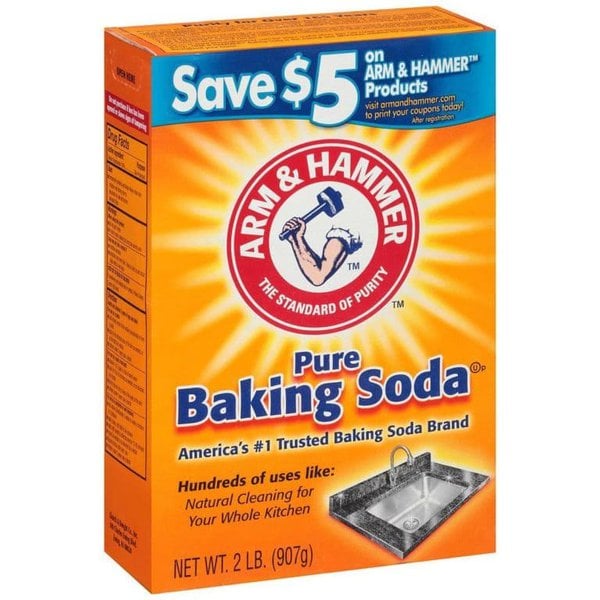
Does Hydrogen Peroxide Kill Mites?
Hydrogen peroxide mixed with borax can also be used as a home remedy for treating dogs with mites. Hydrogen peroxide is very effective even when the mites are burrowed deep inside your dog’s skin, since it is capable of penetrating the skin.
To use hydrogen peroxide and borax to treat a mite infested dog, add 2 tablespoons of borax to 16 oz. of hydrogen peroxide and spritz the mixture all over your dog’s coat using a spray bottle. However, take care not to get the mixture into your dog’s eyes, since it could be harmful to your dog’s eyes.
After spraying your dog, leave the mixture to dry on its own. This will provide ample time for the peroxide and borax to be absorbed into your dog’s skin. Rinsing or drying your pooch with a towel will prevent absorption.
Repeat this treatment as necessary until all the mites have died off. However, the treatment should not be used for more than 6 weeks. It’s also good to note that hydrogen peroxide has a bleaching effect, so you’ll notice some lightening on your doggie’s fur after using this treatment for a while.
For dogs with ear mites, dip a cotton ball into the hydrogen peroxide and borax mixture and use it to clean your dog’s ears frequently, until you get rid of the mites.
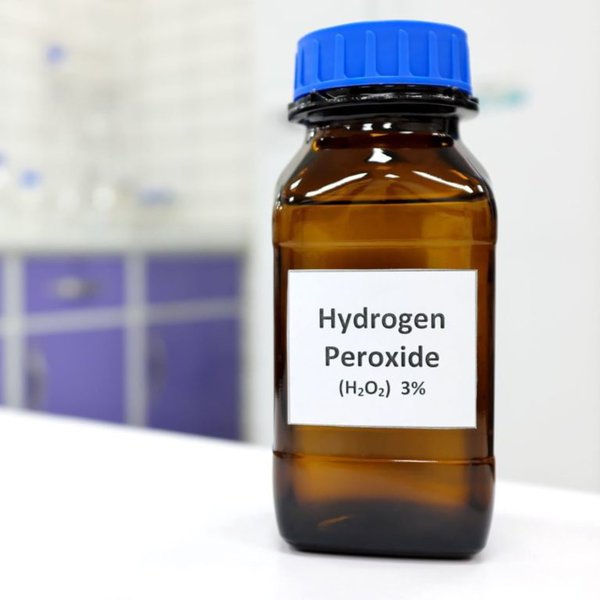
Will Rubbing Alcohol Kill Mites On Dogs?
You can also use rubbing oil to treat dogs with an infestation of ear mites. However, rubbing alcohol should not be used for other kinds of mite infestations.
To kill ear mites using rubbing alcohol, pour the rubbing alcohol onto a cotton ball, and use the cotton ball to clean the insides of your dog’s ears. Repeat the treatment for several days until the infestation is gone.
Note, however, that the rubbing alcohol does not kill mite eggs, so you’ll have to repeat the treatment about two weeks after getting rid of the infestation. This way, you’ll kill any mites that will have been hatched before they get a chance to reproduce.
If your four-legged buddy has mites on other parts of their body, we do not recommend using rubbing alcohol. This is because spraying a large amount of rubbing alcohol on your doggie’s coat can be very harmful to your dog while spraying a small amount will not be effective in killing the mites.
After going through the chemical solutions that you can use to get rid of a mite infestation, in the next section, we are going to look at natural remedies for dogs with mites.
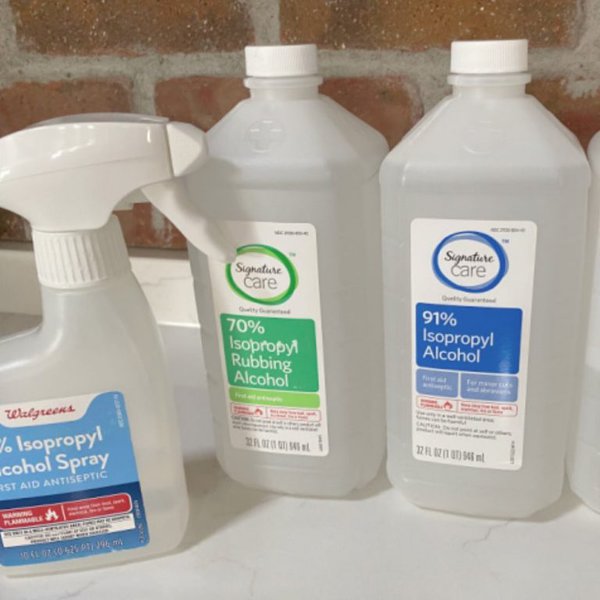
How Do You Kill Mites Naturally?
If you don’t want to use chemical substances on your four-legged buddy, there are some homemade remedies that you can use to kill mites on dogs naturally. These include:
- Apple cider vinegar
- Coconut oil
- Aloe vera
- Lemon
- Yogurt
- Olive oil
- Honey
There are several other natural remedies that you can use to treat dog mites at home. However, the most effective home remedies for dog mites are apple cider vinegar and coconut oil.
In the next sections of this guide, we are going to look at how to use these two to treat a dog that has a mite infestation.

Does Apple Cider Vinegar Kill Mites On Dogs?
Apple cider is a tried and tested natural home remedy for killing mites on dogs.
Apple cider vinegar contains antiseptic properties, which, combined with its acidic nature, make it very lethal against dog mites.
Apple cider vinegar also contains enzymes that make it very effective at soothing and relieving the itchy, dry skin caused by dog mites.
To use apple cider vinegar to treat a dog who has mites, mix using one part apple cider vinegar with one part warm water, and then sponge the water and apple cider vinegar mix on your dog’s coat.
If you don’t want to use a sponge, you can spray your dog with the vinegar and water mix. Simply put the mixture in a spray bottle and spritz it all over your doggie’s coat.
When spraying or sponging your furry buddy with apple cider vinegar, take care to avoid getting the apple cider vinegar into your pooch’s eyes, because it will sting. If your dog has any open wounds caused by too much scratching, you should also avoid getting apple cider vinegar on these wounds.
Don’t dry your four-legged buddy with a towel after applying the apple cider vinegar treatment. Instead, allow the solution to air-dry. This will give it enough time to get absorbed into the skin so that it can then kill the mites.
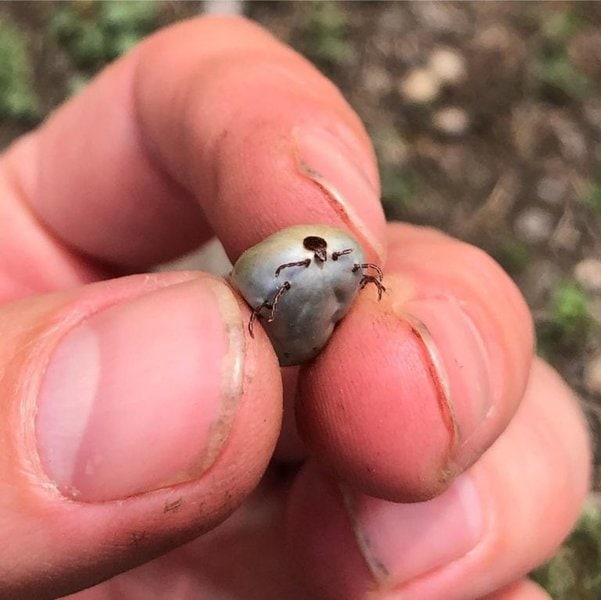
Does Coconut Oil Kill Mites On Dogs?
Coconut oil is another easily available natural home remedy that is very effective at killing many kinds of dog parasites, including mites. Aside from killing mites on an infected dog, coconut oil is also good at keeping mite infestations at bay.
The effectiveness of coconut oil against mites and other ectoparasites can be attributed to the strong antimicrobial and antiseptic properties of the lauric acid that coconut oil contains.
To apply coconut oil to your canine buddy, start by giving them a bath. This will allow you to remove any crusty bits of the skin caused by the mites. Removing these crusty bits of skin will make it easier for the coconut oil to be absorbed.
After drying your pooch with a towel, apply some coconut oil on your palms and then rub the oil all over your doggie’s coat, massaging it gently so that it gets absorbed into the skin.
Do I Have To Rinse Coconut Oil Off My Dog?
After applying coconut oil to your dear Fido, it is advisable to rinse off your dog after about five to ten minutes. This is enough time for the oil to be absorbed into your doggie’s skin.
While coconut oil is safe for your dog to lick, rinsing is recommended to avoid having dirt and debris getting stuck to your doggie’s oily skin.
The coconut oil treatment should be given once or twice a week until the mite infestation has cleared completely.

What Can I Give My Dog For Mites?
If the remedies discussed above do not work for your dear Fido, you also have the option of treating the mite infestation through medication.
Some dog medicines that kill mites include…
- Ivermectin
- Milbemycin oxime
- Selamectin
- Moxidectin
- Amitraz dips
Ivermectin
Ivermectin is a very effective off-label treatment for mites. Ivermectin is usually given through injection. Despite its effectiveness, however, Ivermectin can cause very toxic reactions in some dog breeds, especially Collies, Australian Shepherds, and Shetland Sheepdogs.
Milbemycin Oxime
Just as with Ivermectin, treatment of mites is an off-label use for Milbemycin oxime, which is originally used to prevent heartworm infections in dogs.
Selamectin
This medication is derived from Ivermectin and is particularly effective for treating mites in Collies and other dogs that would have toxic reactions to Ivermectin.
Moxidectin
This is another mite treatment medication that is also derived from Ivermectin. In addition to mites, Mioxidectin can also be used to treat hookworm, whipworm, roundworm, and heartworm infections. Like Selamectin, Mioxidectin is safe for use in Collies, Australian Shepherds, and Shetland Sheepdogs.
Amitraz Dips
Amitraz is highly effective when it comes to killing mites and other parasites like lice and ticks. This medication should only be used on dogs that are older than four months. Excessive amounts of Amitraz can be mildly toxic, so it should be used based on a vet’s recommendation.
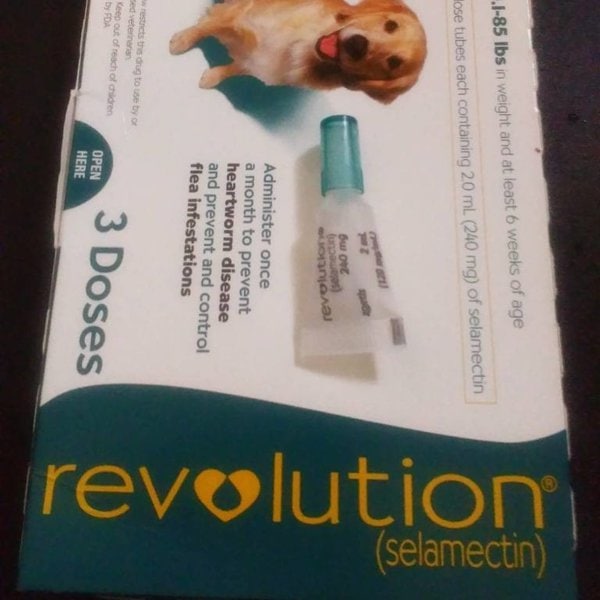
Can Humans Get Mites From Dogs?
Yes, it is possible for humans to get some types of mites from dogs. The most common type of mites that are capable of moving from dogs to humans are sarcoptic mites.
If you get mites from your dog, you’ll develop signs and symptoms like:
- Itchy, reddish welts
- Raised tracts of skin caused by the mites burrowing under your skin
- Severe itchiness
Mites are usually attracted to areas of the body that have lots of skin folds, such as in between the fingers and toes, the buttocks, the armpits, beneath breasts, the inside of the knees, wrists and elbows, and in the male genital area.
Fortunately, mites are not capable of completing their life cycle in the human body, so they’ll eventually die off. Before they die, however, you’ll experience lots of itching, which is caused by the sensitivity of the human skin to mite droppings and their proteins.
So, how long can dog mites live on humans? In most cases, the mites will die off within 10 to 17 days of infecting your skin.
Even though any mites you get from your dog will eventually die off, it is important to get treatment. This is because the mites are still capable of causing some illnesses in humans, including dermatitis, scabies, and ear irritations.
